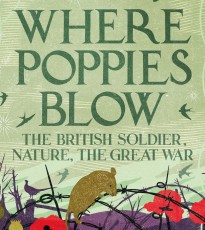

“(It is) an extraordinary book about the healing power and resilience of nature in the darkest of times,” Bradbury said.

It includes poems, extracts from letters, field notes and diary entries and has been described by chair of Judges Julia Bradbury as “destined to be a modern classic”. On Thursday (3rd August) his Where Poppies Blow – The British Soldier, Nature, The Great War (Weidenfeld & Nicolson) was revealed as the winner by prize judge Matt Baker at the National Trust Theatre at BBC Countryfile Live in Blenheim Palace, Oxfordshire, at the end of a public event celebrating nature writing and the Wainwright Prize shortlist. It is the second time that John Lewis-Stempel has been honoured with the award after first claiming it in 2015 for Meadowland: the Private Life of an English Field (Black Swan). It is in this elemental relationship between man and nature that some of the highest, noblest aspirations of humanity in times of war can be found.A story about the relationship between nature and the British soldiers of the Great War has won the £5,000 Wainwright Golden Beer Book Prize. Aside from bird-watching, soldiers went fishing in village ponds and in flooded shell holes (for eels), they went bird nesting, they hunted foxes with hounds, they shot pheasants for the pot, and they planted flower gardens in the trenches and vegetable gardens in their billets.

But perhaps more importantly, the ability of nature to endure, despite the bullets and blood, gave men a psychological, spiritual, even religious uplift.Īnimals and plants were also reminders of home. This connection was of profound importance, because it goes a long way to explaining why they fought, and how they found the will to go on.Īt the most basic level, animals and birds provided interest to fill the blank hours in the trenches and billets - bird-watching, for instance, was probably the single most popular hobby among officers.

WHERE POPPIES BLOW is the unique story of the British soldiers of the Great War and their relationship with the animals and plants around them.


 0 kommentar(er)
0 kommentar(er)
